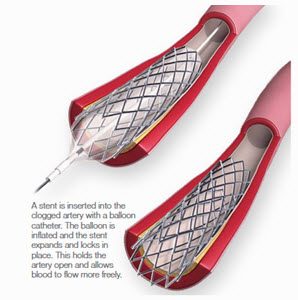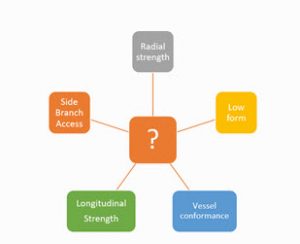In a new series, we are featuring our partners and the work they do with us in the simulation field. Our first featured partner, VIAS, discusses how they use Abaqus and their own virtual design and data analytics capabilities to provide solutions for various problems throughout the lifecycle of a project, in particular with stents and medical devices as described below. This post was written by Devvrat Singh Rathore, FEA Analyst at VIAS, Inc.
Simulation already plays a key role in the medical research and device manufacturing industry. Simulation can predict device performance and replicate biomechanical interactions to aid solutions development. This significantly reduces the costs associated with testing, and collect data when bench testing is not possible. Advancement in simulation technology has allowed researchers and manufacturers to model and study concepts in close detail and provide flexibility in running various What-If Analyses.
One medical device that has particularly seen booming growth has been the stent. A stent is a device that is placed in arteries to keep the arteries free from blockage or collapsing. In many cases of heart disease (such as heart attack) a coronary stent is installed during a Percutaneous Coronary Intervention (PCI, also known as coronary angioplasty). A popular stent design involves the use of a balloon that expands into place a linked wire mesh structure. Stent design has evolved with enhanced mechanical properties of stents and balloons to improve delivery and reduce the likelihood of restenosis (a relapse).

Like all designs, there are significant trade-offs in the functionality of the device. The need to have a small form for delivery and at the same time expand into a structure of some strength to exert sufficient radial force on the vessel wall. Additionally, the stent must conform to the vessel curvature to minimize distortion – failure of which can have severe implications. Simulation thus plays a central role in advancing development by enabling a robust design through an iterative process.

Performing realistic 3D simulation in such a case requires being able to model human tissue, nonlinear structures, and complex contact between the devices and the vessels. SIMULIA has developed robust finite element analysis (FEA) and multiphysics technology within the Abaqus product suite. This technology is being used by bioengineering researchers to simulate realistic physical behavior of the medical devices interacting with the heart, arteries, and blood vessels.
With the use of CAD suites like SolidWorks or CATIA, a stent design can be created and imported into the Abaqus environment. Once a functional stent design is developed, the capabilities of Isight allow further optimization of parameters using techniques of Design of Experiments (DOE). Multiple CAD models can be developed by modifying variables and each of these can be simulated to provide results in the form of a response surface mapped against modified variables. Further shape optimization is achieved by incorporating the selected design into Tosca to give an optimized design.

How VIAS can help
VIAS provides integrated engineering solutions using virtual design experience and data analytics in a variety of industries, including medical device development. Our objective is to prevent repetitive design-related business interruption and to provide cost effective, quick and safe designs with an experienced team. In addition, VIAS is a Value Solutions Certified Partner with Dassault Systèmes and can provide a complete suite of software solutions to aid the entire lifecycle of product design and development.
References: Chinnakonda, M. 2016. A Cardiovascular Stent Optimization Workflow. Dassault Systèmes. http://blogs.3ds.com/simulia/a-cardiovascular-stent-optimization-workflow-how-the-simulia-portfolio-powers-design-innovation/ s

